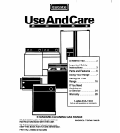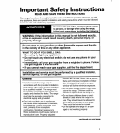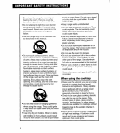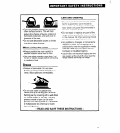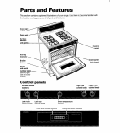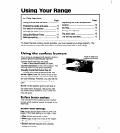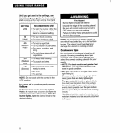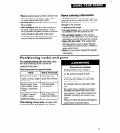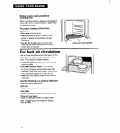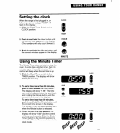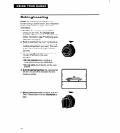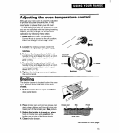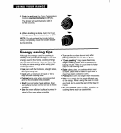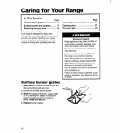
SETTING
RECOMMENDED USE
LITE
l To light the burner. After the
burner lights, turn control
back to a desired setting.
(Hyjh)
l To start foods cooking.
l To bring liquids to a boil.
4-5
l To hold a rapid boil.
(Medium
High)
l To fry chicken or pancakes.
l For gravy, pudding, and
icing.
Until you get used to the settings, use
the following as a guide. For best results,
start cooking at the high setting; then turn
the control knob down to continue cooking.
l To cook large amounts of
vegetables.
2-3
l To keep food cooking.
(Medium
Low)
l To poach and stew.
LO
l To keep food warm until
(Simmer)
ready to serve.
l To melt.
l To simmer.
NOTE: Do not cook with the control in the
LITE position.
In case of a prolonged power
failure
Surface burners can be manually lighted.
Hold a lit match near a burner and turn the
control knob to the LITE position. After the
burner lights, turn the control knob to the
desired setting.
Fire Hazard
Burner flame should not extend
beyond the edge of the cooking utensil.
Be sure all control knobs are turned to
OFF when you are not cooking.
Failure to follow these precautions could
result in fire or burns.
NOTE: Do not leave an empty utensil, or
one which has boiled dry, on a hot surface
burner. The utensil could overheat and
damage the utensil or cooking product.
Cookware tips
No one brand of cookware is best for all
people. Knowing something about pan
materials and construction will help you
select the correct cooking utensils for your
needs.
l NOTE: For best results and greater fuel
efficiency, use only flat-bottomed cook-
ware in good condition.
l The pan should have straight sides and a
tight-fitting lid.
l Choose medium to heavy gauge (thick-
ness) pans that are fairly lightweight.
l The pan material (metal or glass) affects
how fast heat transfers from the surface
burners through the pan material and how
evenly heat spreads over the pan bottom.
Choose pans that provide the best cooking
results.
l Handles should be made of a sturdy, heat-
resistant material and be securely attached
to the pan.
8



